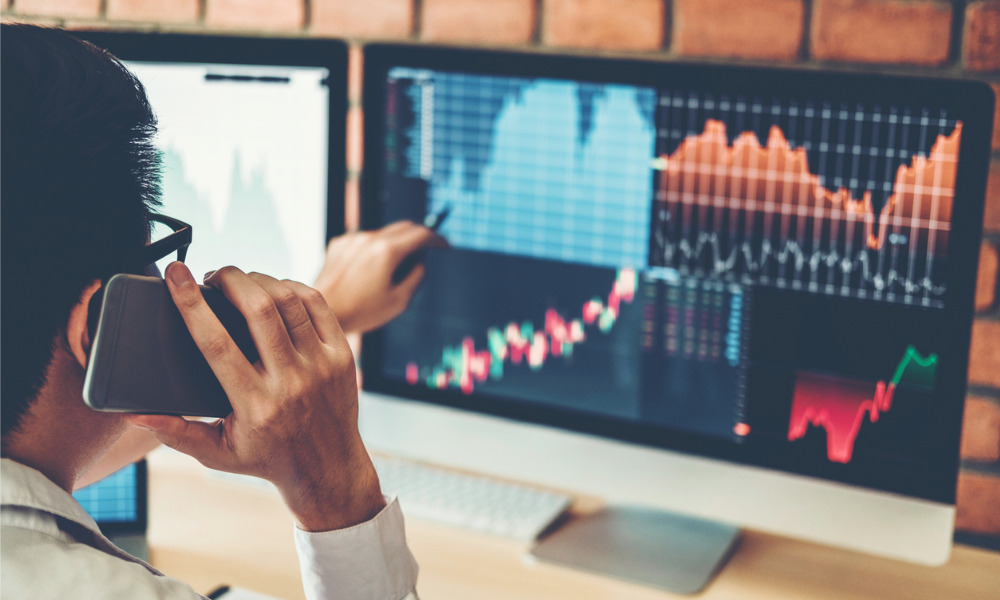Portfolio manager says this crisis is different from 2008 and that markets are better equipped to deal with the effects

The COVID-19 crisis has thrown into focus two rules of money management – investing when the odds are in your favour and having a long-term view.
Sandy Liang, a portfolio manager who leads credit strategies at Purpose Investments, is a veteran of the 2008 market crash who had a front-row seat when working at Bear Stearns in New York. After Lehman Bros. went bankrupt, he was on the buy side running money, so his experience runs deep.
He believes there are two crucial differences between the current coronavirus-triggered downturn and the 2008 credit crisis. Firstly, that there was more forced selling 12 years ago; the result of decades of leverage building up in the investment world and clients getting forced margin calls that were triggered by the Lehman bankruptcy.
It was common, he recalled, for clients to have 4:1 or 5:1 leverage, or borrowed money, against a portfolio of bonds. Everyone, therefore, had to sell at the same time because their credit lines got pulled.
He said: “As a general statement, in 2020 it's a little bit different because the investment world has come into the crisis with higher cash balances. In our two main credit funds, for example, we don’t use leverage at all and came in with 20% and 40% cash, respectively. So, as a general statement, the investment world today is better equipped at handling this downturn.”
He pointed to evidence that, despite still being in a crisis, the week before last saw the high-yield bond market actually have its greatest weekly inflow ever. In the investment grade market, which is the higher quality bond market, in the month of March, in the U.S the new issuance was three times the normal average for that month.
Liang added: “Companies are successfully accessing the corporate debt market and there’s definitely dry powder out there.”
The second reason the portfolio manager believes this is different is that this time governments and central banks have reacted quickly to support individuals and affected businesses. They are better co-ordinated in terms of getting together and deciding what’s needed. Also, in 2020 there aren’t any bad guys, unlike the Wall Street greed that ran amok in 2008, which led to the Fed not really wanting to set a example and rescue companies that were going bankrupt. Not so this time.
Liang explained: “The U.S. government was quick to approve a $2.2 trillion rescue program and spending on corporations, small businesses, individuals. They’re mailing a $1,200 cheque to every adult in the country. So, for example, the U.S. budget deficit prior to the spending program was a trillion dollars and they basically tripled it, just like that. It's an election year in the U.S. and the last thing the incumbent president wants to see is a lot of widespread bankruptcy.”
Liang added that, given the issuance numbers, it’s clearly working. Capital markets remain open for business and it’s open-ended, meaning “if the economy does poorly coming out of this then they’ll continue to throw trillions of free money at the problem”.
So, with more money being thrown at the crisis than before, what should investors do to make the most of the situation? Liang stressed that it’s not about having certainty, it’s about investing when the odds are in your favour and maintaining a long-term view.
With stocks, the former comes down to P/E ratio but in the corporate debt world, money managers look at the credit spread, which is how much incremental yield or interest you are getting above government bonds?
“As of the last week or so, the credit spread in the high-yield bond market is roughly 1,000 over treasuries, so what that means is that U.S. treasuries are under 1% and you’re getting 10 times that in the high-yield market,” he said.
“What does that mean historically? If you invested every time the credit spread was 1,000 basis points over government bonds, the odds are very much in your favour. We did our own study where we looked at the past three recessions, and when bonds were a thousand over, you actually made over 30%, and in two of the occasions over 20%. That’s the signal we’re getting today from the bond market.
"While we are now in a recession and things are painted as bleak, if you assess the odds as a long-term investor, they are in your favour right now when look towards a normalized world and the risk-reward."



